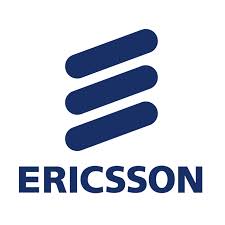IT Voice News: Ericsson (NASDAQ:ERIC) today released a White Paper entitled “India 2020: Bringing the Networked Society to Life” on the role of  government and industry towards making ‘Digital India’ a reality by the year 2020. According to the Ericsson White Paper, to fulfill the Indian Government’s Vision for broadband inspired growth, operators will need access to more spectrum from the government and will themselves need to build new network capabilities and new revenue models so that a viable, long-term strategy can be evolved.
government and industry towards making ‘Digital India’ a reality by the year 2020. According to the Ericsson White Paper, to fulfill the Indian Government’s Vision for broadband inspired growth, operators will need access to more spectrum from the government and will themselves need to build new network capabilities and new revenue models so that a viable, long-term strategy can be evolved.
Heterogeneous networks with a mix of macro cell sites, small cells and Wi-Fi hotspots will be fundamental to manage coverage, capacity and quality of performance for users.
Smartphone prices are expected to fall by 40-50 percent over the next three years. As a result, the number of subscribers able to afford smartphones and services are expected to reach over 700 million by 2020, up from 110 million in 2013. The number of mobile broadband subscribers is expected to grow from 70 million in 2013 to 600 Million subscribers in 2020, with 20 percent of the mobile broadband subscriptions expected to be 4G in 2020.
The increasing number of subscribers, growing affordability of smartphones, and government initiatives such as the National Optical Fiber Network (NOFN) will drive internet connectivity in India. User demand for internet access will drive WCDMA/HSPA population coverage from 20 percent in 2013 to 90 percent in 2020. Ericsson estimates that the estimated blended data usage per subscriber in 2020 will be 600-850 MB.
The revenue mix of Indian operators is expected to evolve to include a higher contribution from data-driven 3G and 4G service revenues in future. Data revenues will represent an increasing proportion of the total, and are expected to rise from 10–12 percent in 2013 to 35–40 percent by 2020, driven by a growth in data subscribers as well as usage per subscriber. Opportunities in emerging services such as m-health, m-education, mcommerce and m-banking are expected to have long-term potential as operators, regulators and other value chain players (such as device vendors, content providers and app developers) increase their focus and take initiatives to promote health, education and financial inclusion among the population.
Fueling and sustaining mobile broadband growth in India will require access to additional radio spectrum; it is the basic resource required for building efficient networks able to serve large numbers of subscribers generating large amounts of traffic.
Ajay Gupta, Vice President and Head of Strategy & Marketing at Ericsson India, says: “Mobile Broadband will be the platform on which the ‘Digital India’ vision can be delivered. For this we will need the release of additional range in the relevant bands. This will contribute to affordability of services, and harmonization of range will allow a lower-cost device ecosystem to evolve. Operators in India have far less spectrum than their peers globally with high mobile broadband penetration. Spectrum will play a key role in driving mobile broadband growth in India in the long run, and will be an increasingly important driver of capacity, user experience, and quality.”
The White Paper proposes that the Indian government’s broadband penetration target of 600 million connections by 2020 can be achieved if sufficient range is made available in a timely way in globally harmonized bands. Additionally, industry and government must work together to ensure contiguity of range to deliver higher bandwidth per user. The availability of sub-USD50 handsets, accelerated and streamlined spectrum allocation process, differentiated 3G and 4G networks based on high speeds, attractive data packages and good user experience will be critical to driving demand in India.





